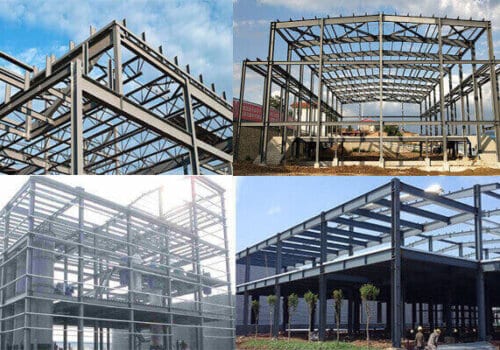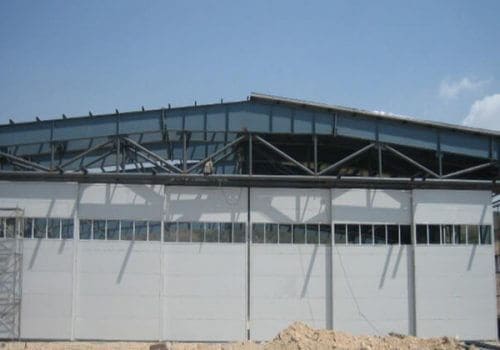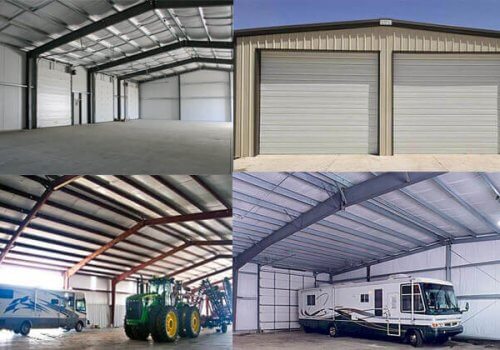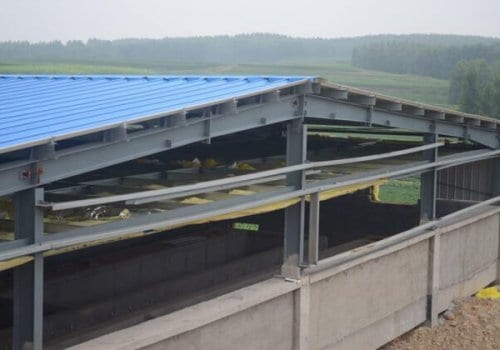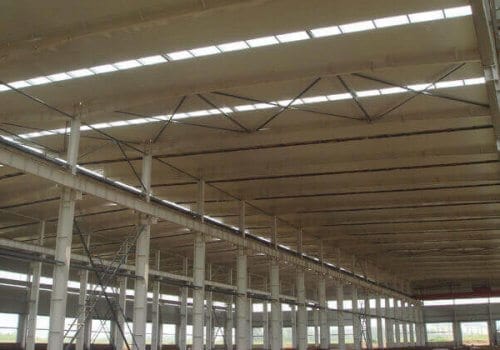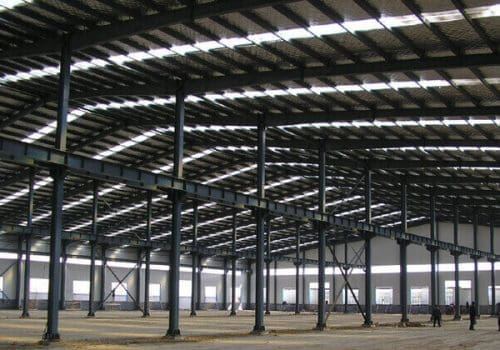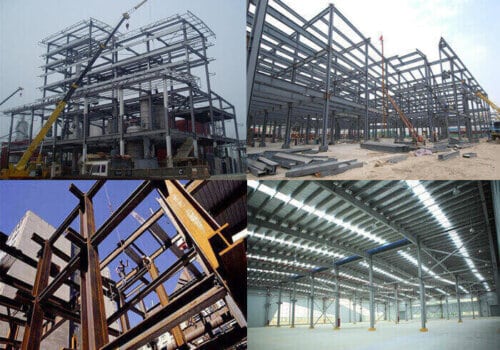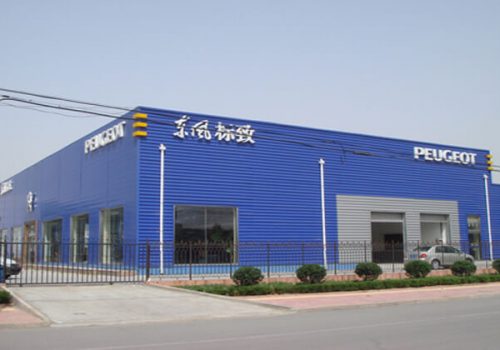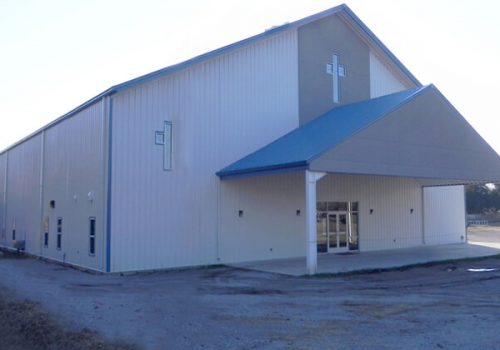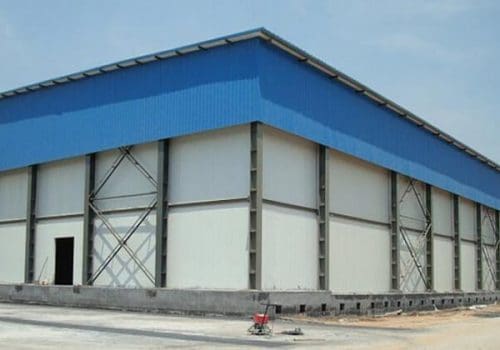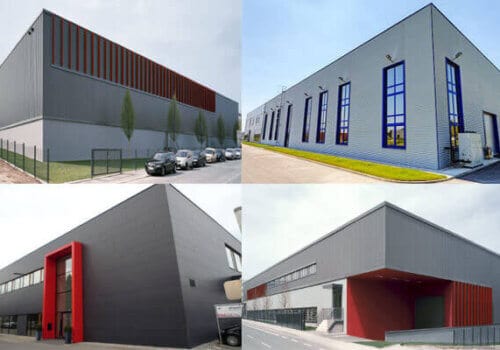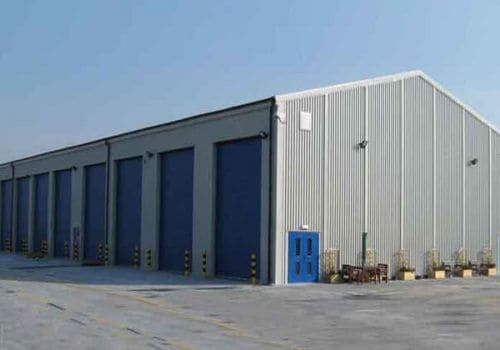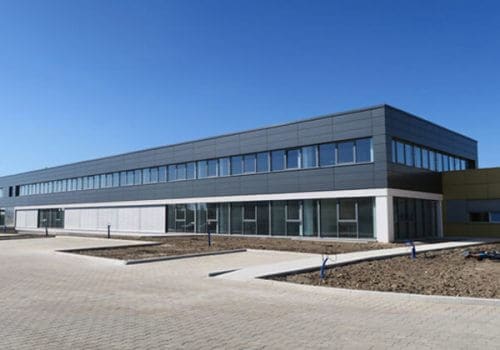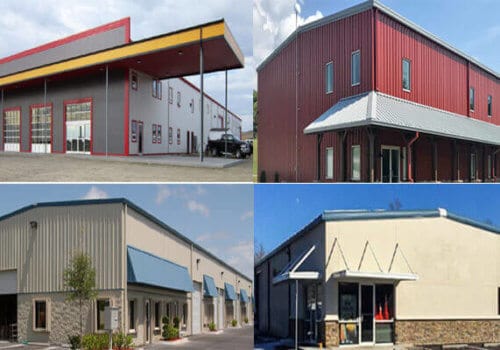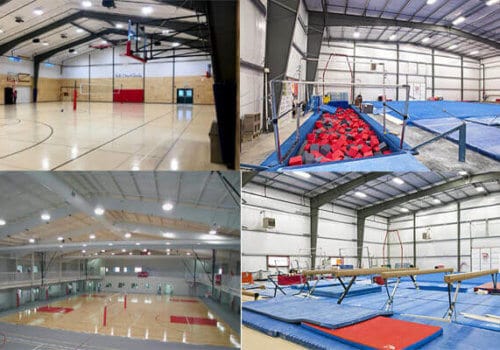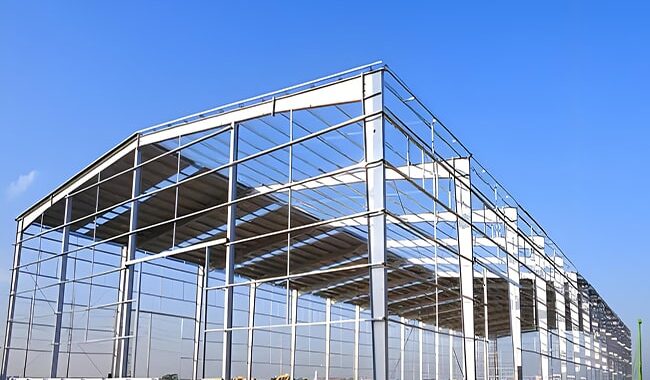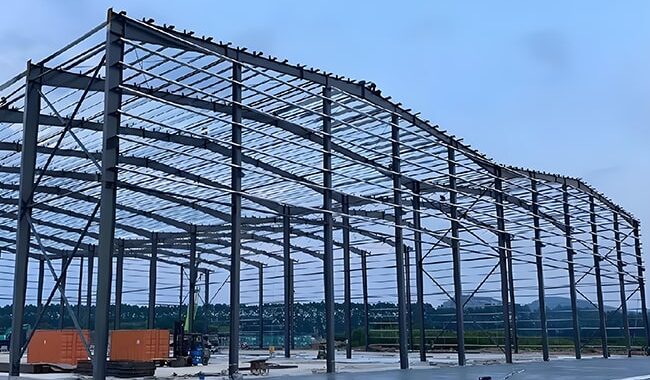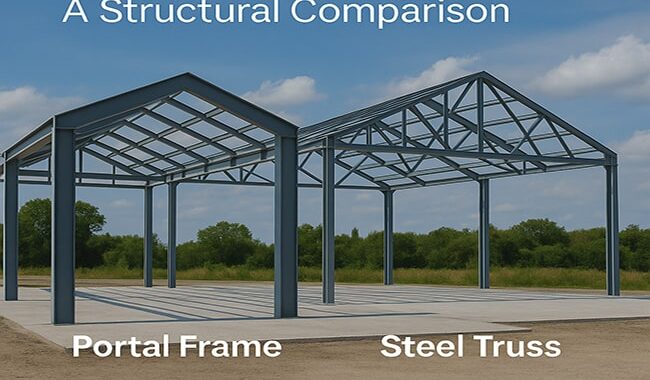A steel portal frame structure is a type of low-rise building composed of steel columns and rafters joined by rigid…
What is Structural Steel Fabrication?
Structural steel fabrication involves the transformation of raw steel into predefined shapes and sizes that are used to construct the frameworks of buildings, bridges, and various other infrastructure projects. This process is fundamental to the creation of durable and resilient structures that can meet the demanding specifications of contemporary engineering.
Steel structure manufacturers deliver a broad spectrum of services, ranging from the production of basic steel components to providing comprehensive design, fabrication, installation, and project management solutions. The nature of these services varies depending on the scale of the manufacturer. Small-scale manufacturers generally focus on producing steel components based on pre-existing customer designs, whereas larger manufacturers are capable of offering end-to-end services that cover all aspects of the steel structure process—from design through to construction.
Read More: Structure Steel Introduction
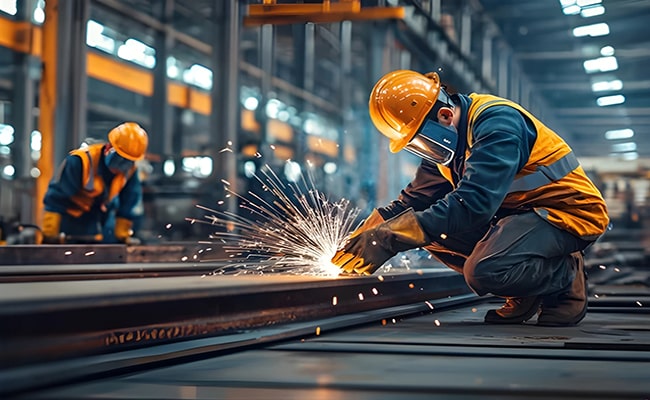
The Structural Steel Fabrication Process
The structural steel fabrication process involves multiple stages that demand precision engineering, highly skilled labor, and advanced machinery. These stages are crucial in ensuring that the fabricated steel components adhere to rigorous safety and performance standards. The key stages include:
- Design and Planning: Engineers and architects collaborate to produce detailed blueprints that define the specifications, including dimensions, load requirements, and material grades, ensuring a tailored solution for the specific project needs.
- Cutting and Shaping: Using state-of-the-art machinery like CNC plasma cutters, laser cutters, and flame cutting systems, steel sections and plates are accurately cut to meet the required specifications of the design.
- Assembly and Welding: Fabricated components are assembled and welded together to ensure the structural integrity of the framework, with careful alignment to meet precise design tolerances.
- Surface Treatment: To improve the durability of the steel components, they undergo various surface treatments, such as sandblasting, priming, and painting, which safeguard them against corrosion and environmental factors.
- Quality Inspection: Rigorous inspections are conducted at every stage of the fabrication process, employing non-destructive testing techniques to verify weld quality, dimensional accuracy, and compliance with industry standards.
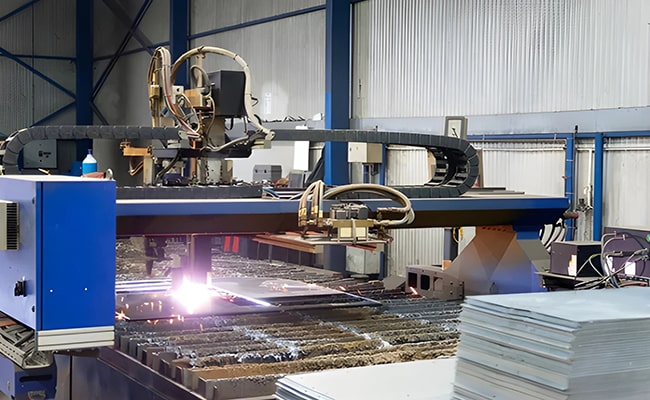
Common Processing Techniques in Structural Steel Fabrication
Several specialized techniques are integral to the structural steel fabrication process, ensuring each steel component meets the highest standards of accuracy and performance. These techniques include:
- Steel Cutting: Advanced cutting techniques such as plasma cutting, laser cutting, and oxygen cutting are utilized to guarantee the precision of steel components, adapting to various thicknesses and types of steel.
- Drilling: Steel components like beams and columns require precise drilling to create holes for connections and assembly. CNC drilling equipment is commonly employed to ensure high precision.
- Welding: As the primary method of joining steel components, welding is a critical process in steel fabrication. Techniques such as arc welding, submerged arc welding, and argon arc welding are selected to ensure the structural integrity of the welded joints.
- Steel Spraying: To prevent corrosion and extend the service life of steel structures, protective coatings such as painting, zinc spraying, and plastic spraying are applied to the steel components.
- Bending and Punching: Bending machines are utilized to shape steel into necessary forms, while punching processes are employed to create holes for further assembly and connections.
Equipment for Structural Steel Fabrication
The structural steel fabrication process demands specialized equipment to ensure high precision and efficiency. Key pieces of equipment include:
- CNC Cutting Machine: Essential for the cutting processes, the CNC cutting machine is used for flame, plasma, and laser cutting, ensuring the precision and efficiency of the cuts.
- H-Beam Assembly Machine: This machine plays a pivotal role in the accurate and efficient assembly of H-beams, a crucial component in large-scale structural steel projects.
- Submerged Arc Welding Machine: The submerged arc welding machine is employed to perform high-quality automated welding, particularly on H-beams and other critical structural components.
- Shot Blasting Machine: Shot blasting is used to clean the steel surface, removing rust and impurities, which enhances the quality of the steel and improves the adhesion of subsequent protective coatings.
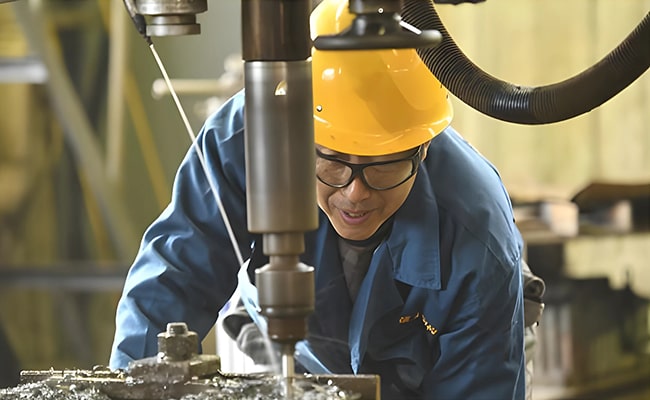
Benefits of Structural Steel Fabrication
Structural steel fabrication offers several key advantages that have made it the preferred choice in modern construction. These benefits include:
- Strength-to-Weight Ratio: Steel’s inherent strength relative to its weight enables the creation of longer spans and taller structures using less material, making it a highly efficient choice for large-scale projects.
- Design Flexibility: Steel’s ability to be molded into various shapes allows for the accommodation of innovative architectural designs and complex geometries, offering tremendous design flexibility.
- Speed of Construction: Prefabricated steel components expedite the on-site assembly process, reducing construction time and lowering labor costs significantly.
- Sustainability: Steel is highly recyclable, and many fabrication processes utilize recycled materials, thereby contributing to environmental sustainability and conservation efforts.
- Durability and Maintenance: Steel structures are resistant to pests, fire, and weathering, which reduces long-term maintenance costs and extends the service life of the structures.
Applications of Structural Steel Fabrication
Structural steel fabrication is employed across a broad range of sectors and industries, including:
- Industrial Buildings: Factories, warehouses, and workshops benefit from the strength and flexibility offered by steel structures.
- Commercial Buildings: Steel is widely used in the construction of shopping malls, office buildings, gymnasiums, and supermarkets, providing durable and versatile frameworks.
- Agricultural Buildings: Steel structures are increasingly utilized in the construction of farms, stables, poultry houses, and other agricultural facilities.
- Residential Buildings: The use of steel in residential construction is on the rise, offering durable, flexible, and cost-effective solutions for homes, apartments, and dormitories.
- Infrastructure: Bridges, stadiums, hospitals, schools, and other vital infrastructure projects rely heavily on the strength and versatility of structural steel.
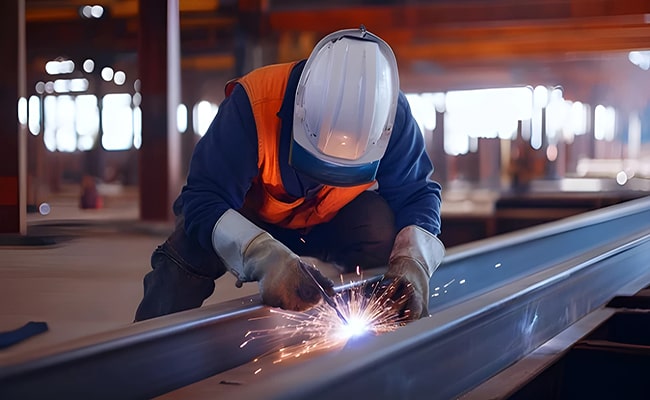
Read More: Steel Structure Detail
Ensuring Quality and Safety in Structural Steel Fabrication
Ensuring quality and safety is crucial for the successful completion of any structural steel fabrication project. Key measures include:
- Certification and Training: Fabricators and welders must possess relevant certifications to ensure they are qualified to perform their tasks with the necessary expertise.
- Inspection Protocols: Continuous inspections throughout the fabrication process help identify and resolve any issues promptly, ensuring that the final product meets all safety and performance standards.
- Safety Measures: Strict adherence to safety protocols during fabrication is critical to protecting workers and maintaining the structural integrity of the final product.
FAQs about Structural Steel Fabrication
Q1: How does structural steel compare to concrete in construction?
A1: Structural steel offers higher strength-to-weight ratios and faster construction times compared to concrete. However, concrete provides better fire resistance and is often more cost-effective for certain applications.
Q2: What are common challenges in steel fabrication?
A2: Challenges include maintaining dimensional accuracy, preventing welding defects, and ensuring timely coordination among project stakeholders.
Q3: Can structural steel be used in residential buildings?
A3: Yes, structural steel is increasingly used in residential construction for its durability, design flexibility, and speed of assembly.
Conclusion
Structural steel fabrication is integral to modern construction, offering a host of benefits such as enhanced strength, flexibility, speed, and sustainability. By understanding the structural steel fabrication process, engineers, architects, and project managers can ensure that their projects are completed on time, within budget, and to the highest standards of quality and safety. The evolving demands of the construction industry make structural steel fabrication a critical component in creating the resilient infrastructure required for the future.
